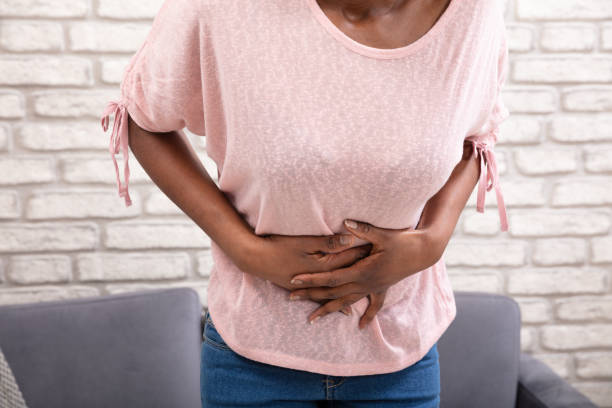
Navigating the world of endometriosis can feel overwhelming, especially when you're confronted with a barrage of unfamiliar terms and medical jargon. From adenomyosis to retrograde bleeding, understanding these terms is crucial for managing your condition and communicating effectively with healthcare providers.
This endometriosis glossary aims to demystify these terms, empowering you with the knowledge to navigate your endometriosis journey with confidence.
Adenomyosis
A condition that’s characterized by growth of the endometrial tissue into the muscular wall of the uterus, adenomyosis can result in an enlarged uterus and painful, heavy periods.
RELATED: What To Expect In An Endometrial Biopsy
Biopsy
A medical procedure in which a small piece of tissue or sample of cells is removed from the body for examination, usually under a microscope, to check for damage or disease.
Cervix
Tissue that connects the vagina and uterus. The cervical canal, which passes through the cervix, allows blood to pass through during menstruation, and a baby to pass through during childbirth; it also allows sperm to travel from the vagina into the uterus.
Cul-de-sac
A pouch that serves as an extension of the cavity between the rectum and the back wall of the uterus; endometriosis can occur in the pouch.
DIE (Deeply Infiltrating Endometriosis)
A highly invasive form of endometriosis in which the disease invades organs near the uterus, such as the bowel and bladder.
Dysmenorrhea
Painful periods. Primary dysmenorrhea, the most common type, isn’t caused by another condition; in contrast, secondary dysmenorrhea is caused by conditions that affect the uterus, such as endometriosis.
Dyspareunia
Painful sexual intercourse for women; there are many possible causes, including endometriosis.
Ectopic Pregnancy
Pregnancy that occurs outside the uterus, usually in the Fallopian tube. This is not a viable pregnancy. If left untreated, it can be life-threatening to the woman.
Endometrial Ablation
A procedure that involves destroying tissue in the uterine lining with laser energy, electrical current, or other methods, to treat heavy or prolonged menstrual bleeding.
RELATED: Is Endometrial Ablation The Right Fit For You?
Endometrioma
A cyst that forms in the ovary when endometrial-like tissue grows there; the cyst contains old menstrual blood that looks like liquid chocolate — which is why these are often referred to as chocolate cysts.
Endometriosis
A condition that occurs when tissue that’s similar to the lining of the uterus grows outside the uterus in the pelvic cavity. It can cause heavy menstrual bleeding and pain.
Excision Surgery
A treatment that involves physically cutting out visible areas of endometriosis, usually through laparoscopy.
Fallopian Tubes
Tubes that make it possible for a released egg to travel from the ovary to the uterus. Endometriosis can damage the fallopian tubes.
Hysterectomy
A surgical procedure to remove the uterus, hysterectomy can be performed through laparoscopy, transvaginally, or abdominally to treat endometriosis and other medical conditions.
Laparoscopy
A minimally invasive way of performing surgery to diagnose or treat various medical conditions. During laparoscopy, a thin tube with a camera and light is placed through very small incisions, and surgical instruments can be inserted to cut or repair tissue.
Menstruation
The monthly bleeding (a woman’s period) associated with a woman’s menstrual cycle, which is driven by hormonal changes her body goes through in preparation for pregnancy.
Pelvic Adhesions
Fibrous scar tissue related to previous inflammation. It can be caused by endometriosis, prior surgeries, or infection. These adhesions can occur on the pelvic wall or attach one organ to another in the pelvis. They can cause pain.
Pelvic Congestion
A condition that causes chronic pelvic pain and is thought to stem from problems with enlarged veins in the pelvis.
Pelvic Floor Dysfunction
Disorders of the pelvic floor — such as incontinence, prolapse, pain syndromes, endometriosis, and others — that are related to physiological or anatomical abnormalities.
Pelvic Floor Therapy
A specific form of physical therapy that addresses the movement and strength of the muscles, bones, ligaments, and fasciae in your pelvis. The goal of this therapy is to prevent or ease the pelvic floor spasms and pain that can occur with endometriosis.
Pelvic Region
The lower abdominal area that contains the uterus, ovaries, fallopian tubes, cervix, and vagina in women. This is where endometriosis occurs.
Peritoneum
Smooth tissue that lines the walls of the abdomen and covers most of the organs in the abdomen and pelvis; endometrial tissue often occurs on the peritoneum.
Rectovaginal Septum
A thin membrane of connective tissue that separates the vagina from the rectum — endometriosis can affect this area too.
Retrograde Bleeding
A pattern in which menstrual blood containing endometrial cells flows back through the fallopian tubes and into the pelvic cavity instead of exiting the body. The displaced endometrial cells can stick to the surfaces of pelvic organs, where they grow, continue to thicken, and bleed during each menstrual cycle.
Uterosacral Ligaments
These bands of fibrous tissue attach the lower part of the uterus to the sacral bone and are one of the primary supports for the uterus and upper vagina. They are a typical place for endometriosis to occur.








